Noise Output
Fan Full Speed, 75% & 50%
Noise is increased at full speed, exceeding 50 dBA. At 75% fan speed, it is close to 41 dBA; at 50%, it drops notably lower to 26.5 dBA. Overall, this card uses strong fans, which are noisy at high speeds.
Idle, Multimedia & Rendering
Thanks to the fan-stop feature, most graphics cards are dead quiet at idle and multimedia. The Galax RTX 4070 Super is also silent in rendering.
Gaming
During short gaming periods, the Galax card is dead silent.
Furmark
In Furmark, where the card is stressed, the output noise is close to 26 dBA, which is not that high.
Frequency Plots
30% Fan Speed
A spike at 1.25 KHz, and the second highest peak is at 1.6 KHz.
40% Fan Speed
The 1.25 KHz and 1.6 KHz spikes remain, but the highest is at 400 Hz.
50% Fan Speed
The highest frequency is 630 Hz. In addition to the 1.25 KHz and 1.6 KHz ones, there is also a high spike at 160 Hz.
60% Fan Speed
The highest frequency is 630 Hz.
70% Fan Speed
Again, the highest frequency is 630 Hz.
80% Fan Speed
1.6 KHz and 630 Hz are the highest frequencies.
90% Fan Speed
Again, 630 Hz is high, and the adjustment frequencies to 1.6 KHz are also high.
100% Fan Speed
At full speed, the highest frequency is 630 Hz, and the range between 1.25 KHz and 1.6 KHz is also high.
Signal Recordings
I have recorded the signals shown above, but please keep in mind that I’ve enabled Automatic Gain Control (AGC) to do so to make it easier for you to reproduce them. The provided recordings are only offered for aural identification purposes.
30% Fan Speed
40% Fan Speed
50% Fan Speed
60% Fan Speed
70% Fan Speed
80% Fan Speed
90% Fan Speed
100% Fan Speed
- Prologue & Technical specifications
- NVIDIA’s Key Technologies
- Box & Contents
- Part Analysis
- Specifications Comparison
- Test System
- Game Benchmark Details
- Raster Performance
- RT Performance
- RT Performance + DLSS/FSR Balanced
- Raytracing Performance + DLSS/FSR Balanced + FG
- DLSS/FSR Balanced (No RT)
- DLSS/FSR Balanced + FG (No RT)
- Relative Perf & Perf Per Watt (Raster)
- Relative Perf & Perf Per Watt (Raster + DLSS/FSR)
- Relative Perf & Perf Per Watt (RT)
- Relative Perf & Perf Per Watt (RT + DLSS/FSR)
- Relative Perf & Perf Per Watt (RT + DLSS/FSR + FG)
- Rendering Performance
- Operating Temperatures
- Operating Noise & Frequency Analysis
- Power Consumption
- Clock Speeds & Overclocking
- Cooling Performance
- Epilogue
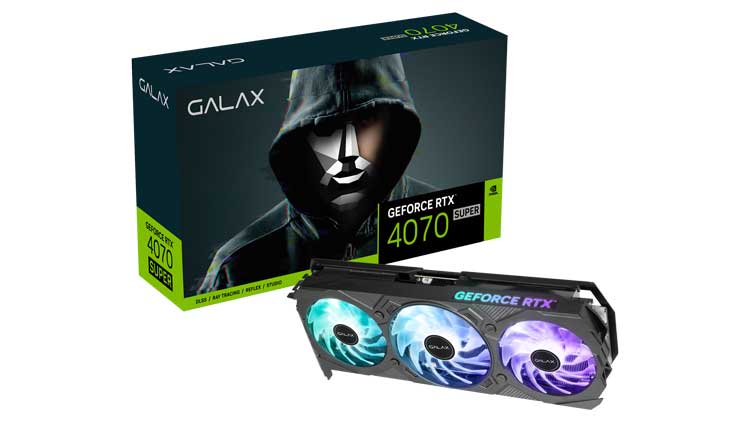


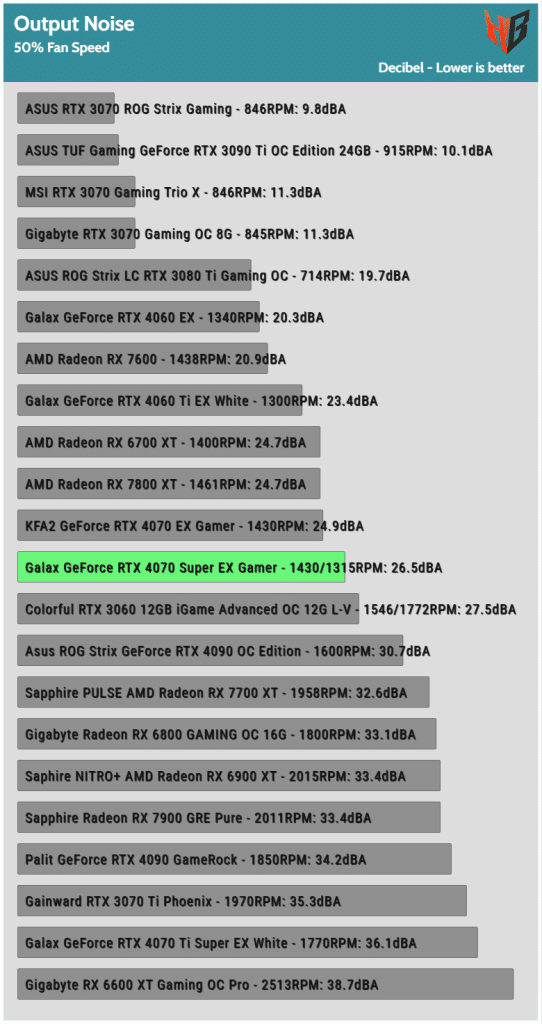
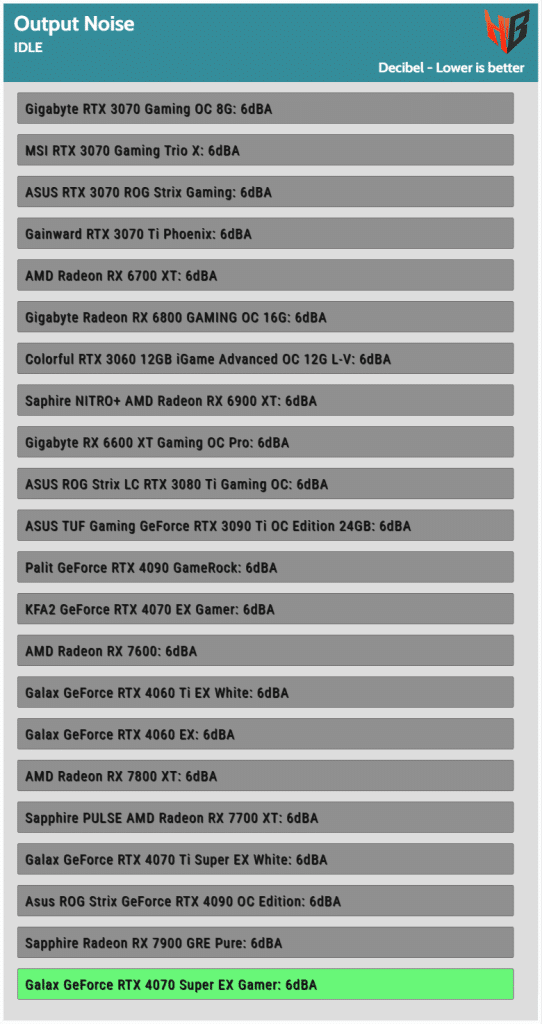
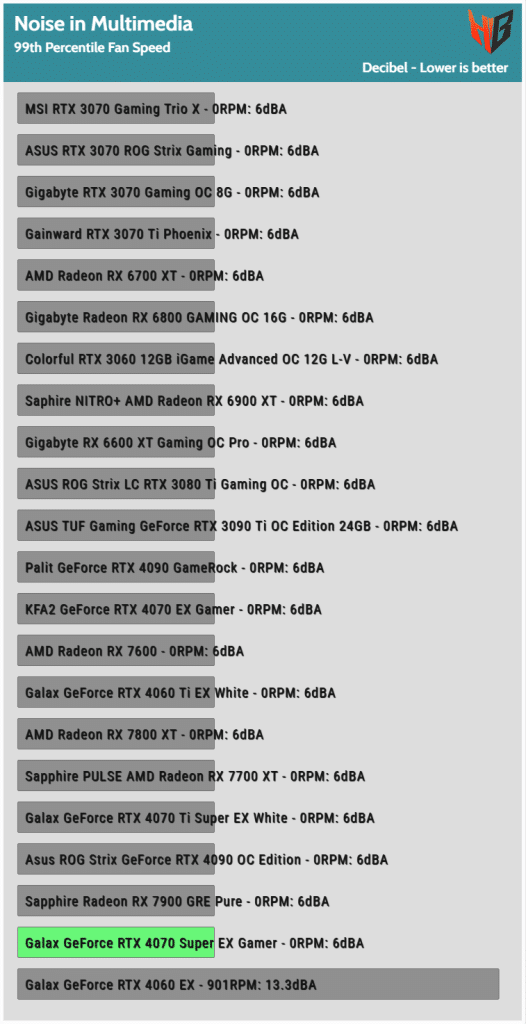
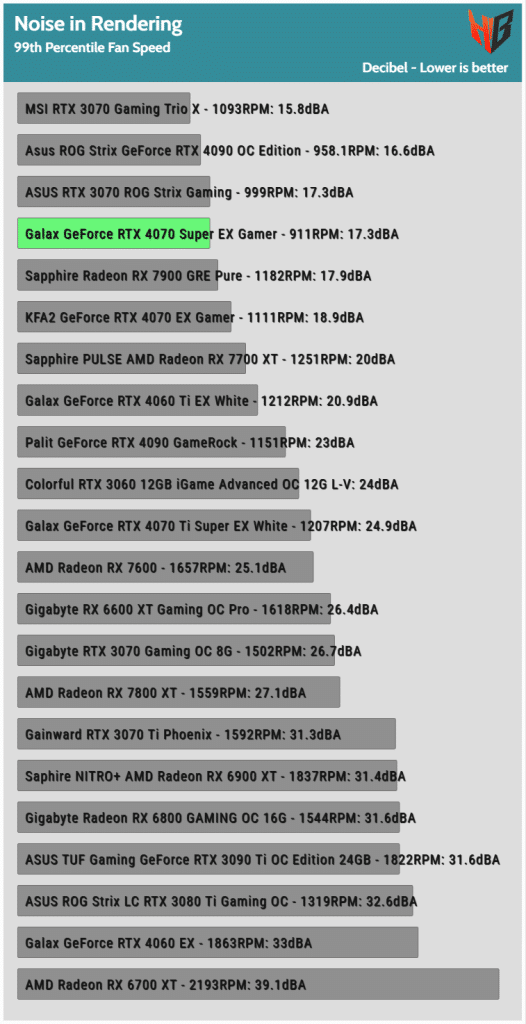
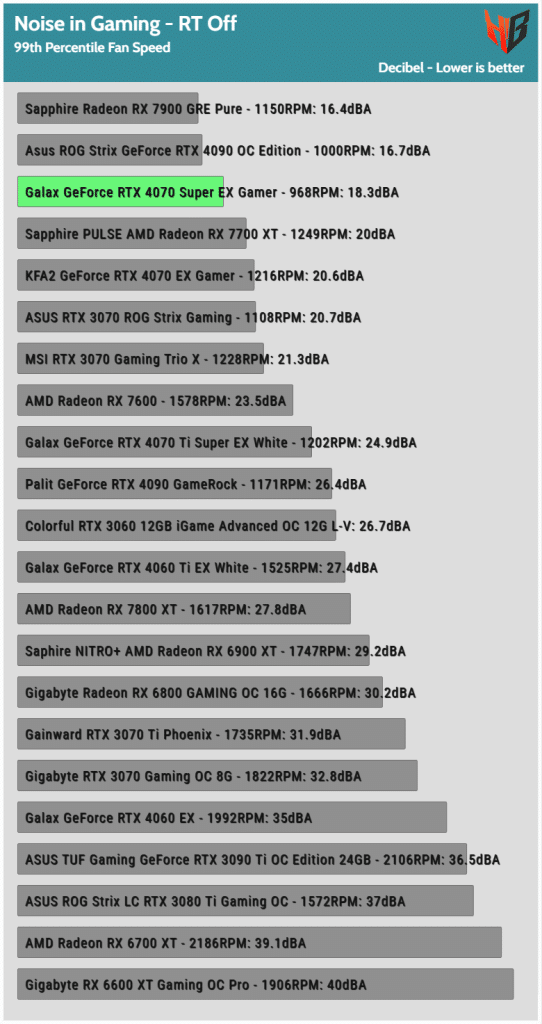
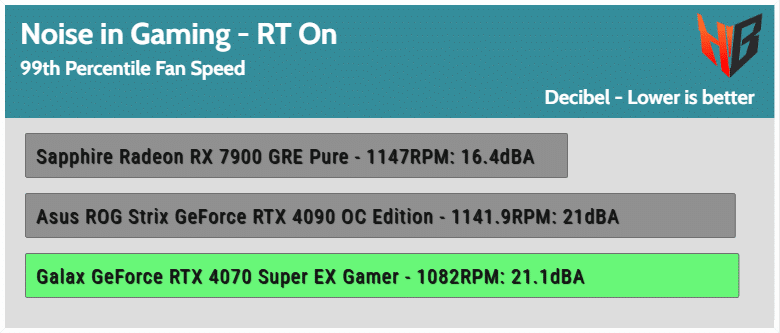

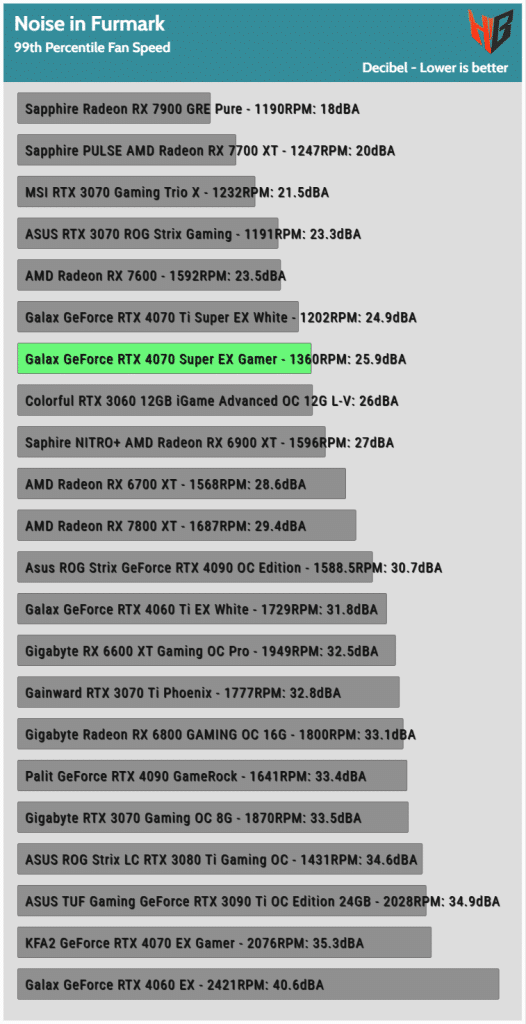









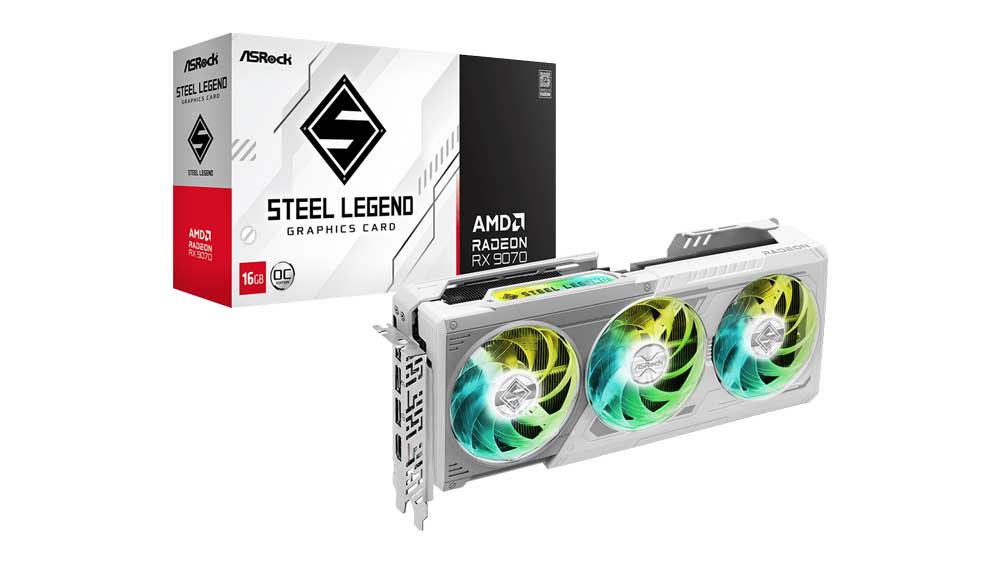

Since it looks like the 40 super series uses the new 12v-2×6 headers, does this mean that ATX 3.0 psus using 12vhpwr won’t have that burning issue? Thanks for all you do.
Nope, there won’t be a problem with ATX v3.0 PSUs because the cable remains exactly the same, and on the PSU side, there weren’t any notable issues.
Thank you for the reply! I’ve been unnecessarily stressed because I got a 4080 super FE and was worried about fire thing as this is my first pc build.